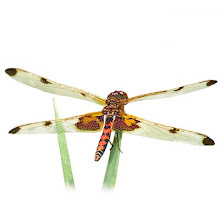February 29, 2008
A warm day, but a search of Peace Park didn't turn up any insects. As usual on any warm day in winter, I found a few Red-shouldered Bugs outside Jesse Hall. I also had a winter crane fly land on a book I was reading outside.
I've been reading Enjoying Moths by Roy Leverton. The book was published in Great Britain, so it's mostly about British moths. Here's a great quote from the chapter discussing European moths that have become established in North America:
“Some moths (or rather their caterpillars) have been given common names, such as Apple Leaf Skeletonizer Chloreutis pariana and Omnivorous Leaf-tier Cnephasia longana, reflecting an American tendency to see moths as enemies rather than as wildlife. After it was introduced, our Rosy Rustic became their Potato Stem Borer!”
skip to main |
skip to sidebar
Prints are available for homes or businesses. Note cards and trading cards are also available. Growth charts are a new item.
My insect photographs are available for licensing to publishers. Unless otherwise noted, all entries refer to mid-Missouri insects.
A selection of my images and a list of species I've photographed are available on my web site.
My insect photographs are available for licensing to publishers. Unless otherwise noted, all entries refer to mid-Missouri insects.
A selection of my images and a list of species I've photographed are available on my web site.
My images are available on t-shirts from CafePress (hhttp://www.cafepress.com/butterfly_shirts)







1 comment:
Interesting quote regarding the New World Common names of the moth common names being changed from its Old World Name into a destructive sounding name- like Potato Stem Borer. In many cases- the common name reflects the behavior of the larvae of the moth- rather than the adult moth. When I am researching a plant, insect, bird, etc- I like to learn the meaning of the Scientific name- it is usually descriptive as well- and in many times humorous. Some of the more interesting that I've encountered: the Brown-headed Cowbird scientific name means "Dark, Greedy, Beggar." The White Micrathena Spider's Scientific name means: "Turban Wearer" (my favorite), and The Pied-Billed Grebe's scientific name means: "feet at the buttocks and rump-headed."
I do think that in the United States (and other agricultural countries)- many insects are viewed as enemies. It is interesting to read the yearbooks published by the US Department of Agricultural over the years- many entymologists were employed to study the effects of insects in regards to the damage that they cause crops.
Post a Comment